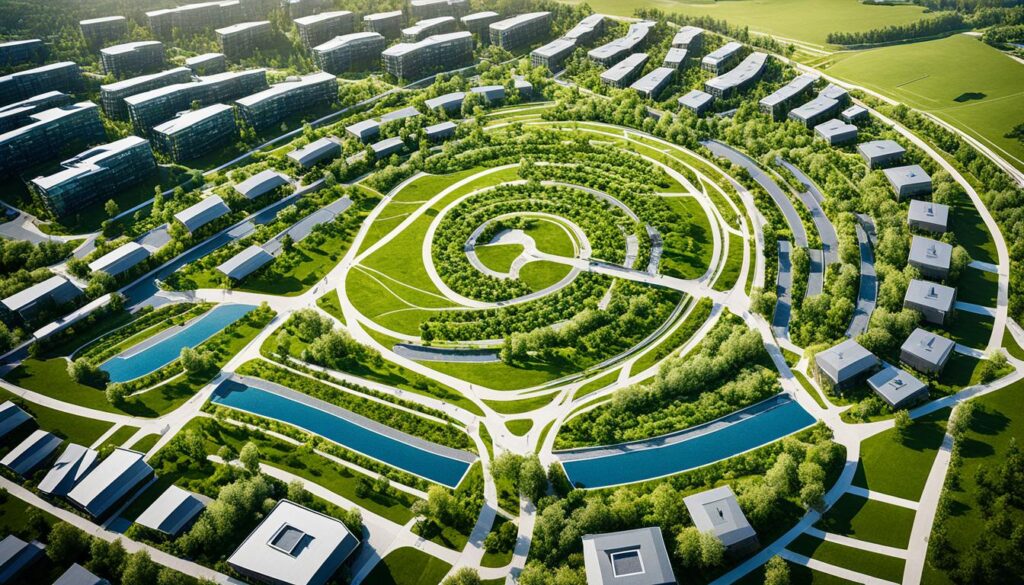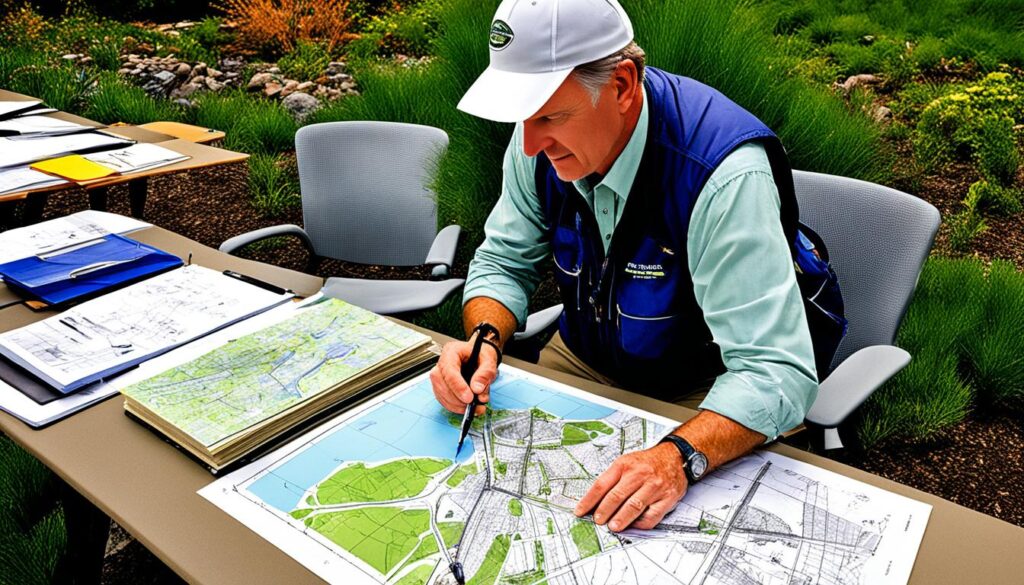
Landscape architecture projects are big and bold, bringing unique challenges. Knowing the challenges is key to designing on a grand scale. It’s vital to get in touch with the people involved and check the environment. This guide will show how to make big plans work in landscape architecture.
Key Takeaways
- Comprehensive planning is essential for successful large-scale landscape architecture projects
- Understanding the scope and complexities of the project is crucial for effective planning
- Identifying and engaging with all relevant stakeholders is key to a collaborative and inclusive planning process
- Assessing environmental factors and site constraints is vital for developing sustainable and responsive designs
- A strategic and well-executed comprehensive planning approach sets the foundation for successful large-scale landscape architecture projects
Understanding the Scope and Complexities of Comprehensive Planning
In landscape architecture, comprehensive planning is key. It requires a real understanding of the project’s needs and many details. This phase ensures the design’s success, ensuring everyone’s needs and the site’s challenges are seen.
Identifying Stakeholders and Gathering Input
To start planning, we find the important people: clients, communities, and experts. It’s crucial to talk with these groups. This way, we learn what they need and what they think. Their insights shape the design process.
Landscape architects work with people through talking, discussing, and surveys. This inclusive process makes the community feel involved. It also highlights any potential issues early on.
Landscape architects can identify a project’s unique needs and goals by engaging with clients, communities, and experts. They can then use this information to develop a functional and aesthetically pleasing design. For example, a landscape architect working on a park design might hold community meetings to gather input on the amenities residents would like to see, such as playgrounds, walking trails, or picnic areas.
They might also consult with environmental experts to ensure the design incorporates sustainable practices and minimizes the project’s ecological footprint. By taking a collaborative approach, landscape architects can create spaces that not only meet but exceed the expectations of their clients and the community. This article is a true masterpiece – give it a read.
Assessing Environmental Factors and Site Constraints
We must also understand the site’s environmental aspects well. This means looking at land, water, soil, and the climate. We also check on rules that could affect the design.
Understanding these aspects helps us see the site’s challenges. It also opens up opportunities. With this info, we can make beautiful and good designs for the environment.
We also look at things like roads, power, and who can access the area. This ensures that the final design fits well and works for everyone.
In addition to these physical factors, we also consider the social and cultural context of the site. This includes understanding the needs and preferences of the people who will be using the space and any historical or cultural significance the site may hold.
By taking a holistic approach to site analysis, we can create designs that respect the environment, serve the community’s needs, and enhance the overall quality of life. This integrated approach allows us to create sustainable, functional, and beautiful spaces that benefit people and the planet.

Planning in landscape architecture is in-depth and needs a full view. By working with the community, evaluating the environment, and understanding the site, architects set the stage for a successful and lasting design.
Comprehensive Planning: A Strategic Approach to Landscape Design
Landscaping is a complex and inspiring area. It focuses on managing projects well and using top methods. This is key for making beautiful, lasting design works. In this part, we dive into a strategic method that helps experts manage big projects better. It also shows how they work with many people for the best results.
Strategic planning is very important. It means setting goals and managing projects wisely from the start. Landscape architects do this to ensure their work meets the project’s main aims. They outline the project well, set clear deadlines, and keep in touch with everyone involved. This makes everything run smoothly and avoids problems.
The design process is also crucial here. Architects deal with lots of issues like the environment, space limits, and what people need. To turn their ideas into real plans, they must design smart. They use the best tools, work with others, and always try to improve their work with feedback and new ideas.
Yavapai Landscaping Prescott offers complimentary estimates for Prescott and its nearby localities for landscaping and tree services, ranging from tree removal, trimming, stump grinding, land clearing, and storm cleanup to emergency tree care.
